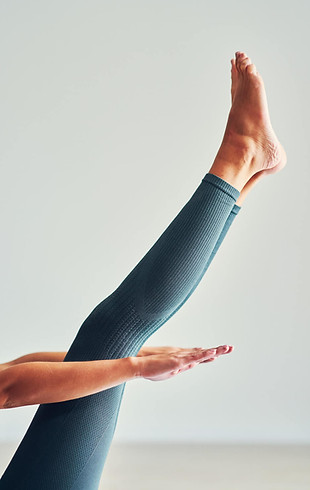
What is
Pilates?
What is Pilates and how it can help you.

The Principles of Pilates
-
Control – Every movement is performed with precision and awareness, ensuring that muscles are engaged correctly.
-
Concentration – Mindful movement is essential, as Pilates encourages a deep connection between the body and mind.
-
Centre – Often referred to as the "powerhouse," the core is the foundation of all movements, providing stability and strength.
-
Flow – Exercises are designed to be smooth and continuous, promoting efficient movement patterns.
-
Precision – Proper technique is prioritised over speed or repetition, ensuring maximum benefits.
-
Breath – Breathing is integrated into each exercise to enhance control, relaxation, and muscle engagement.

Pilates can be practised in two main ways:
-
Mat Pilates: Performed on a mat using body weight for resistance, occasionally incorporating small pieces of equipment such as resistance bands, Pilates rings, foam rollers or small weights for variety and challenge.
-
Equipment-Based Pilates: Uses specialised machines such as the Reformer, Cadillac, Ladder Barrel, Spine Corrector, Ped a Pul or Wunda Chair, which provide resistance through a system of springs and pulleys. These machines help support and challenge the body, offering a more tailored experience.

Pilates is well-known for its many physical and mental benefits, including:
-
Core Strength – Strengthening the deep muscles of the abdomen, lower back, and pelvis improves stability and posture.
-
Improved Flexibility – Stretching and lengthening movements help increase overall flexibility and mobility, making everyday life easier, and less physically stressful.
-
Better Posture – By strengthening the core and aligning the spine, Pilates encourages better posture and reduces strain on the body.
-
Injury Prevention & Rehabilitation – Many physiotherapists, osteopaths, chiropractors and medical practitioners advocate Pilates as an aid to recovery from injuries or illness by promoting safe, controlled movement.
-
Enhanced Mind-Body Connection – The focus on breathing and precision fosters greater body awareness, reducing stress and promoting relaxation.
-
Increased Strength Without Bulk –Pilates emphasises muscular elongation and balance, creating a toned physique, rather than a bulky one.

Who Can Practise Pilates?
-
One of the great advantages of Pilates is its accessibility. It can be adapted for people of all fitness levels, from complete beginners to elite athletes. It is also widely used in rehabilitation for those recovering from injuries, particularly back pain or joint issues. Personally, I have used it to rehab from multiple knee surgeries. Pregnant women and older adults can also benefit from modified Pilates routines that support their specific needs.
-
Whether you’re looking to build strength, improve posture, or simply move with greater ease for a more active everyday life, Pilates offers a holistic approach to fitness for everyone that benefits both body and mind.
